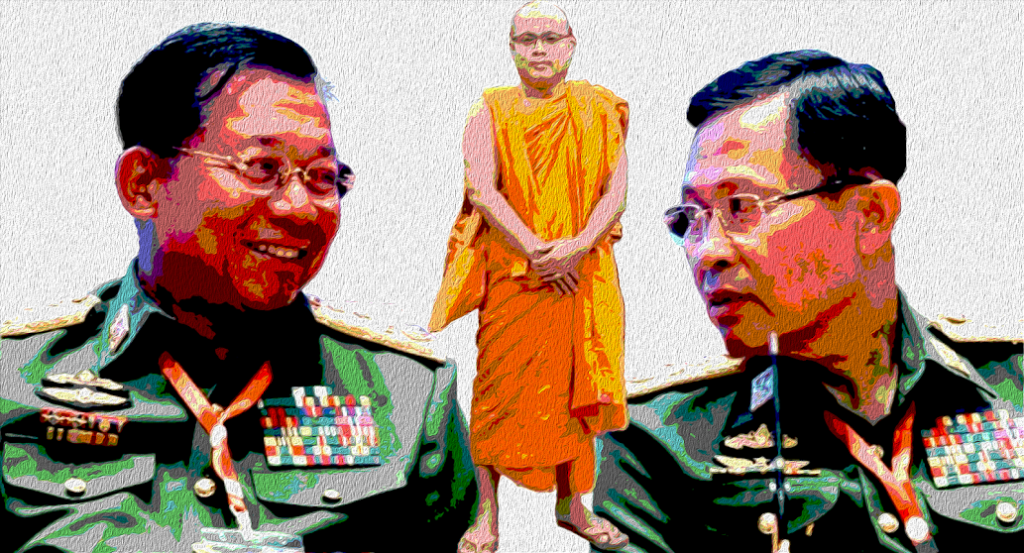Myanmar Spring Chronicle – January 18 by MoeMaKa Media
Unfoldings: Speculations Surround Leadership Change in Military Council
In the aftermath of the seizure of approximately 17 cities in northern Shan State and the targeting of operational headquarters akin to regional military bases such as DaKaSa and SaKaKha, a wave of concern and scrutiny is now directed towards the leadership of the “Myanmar Tatmadaw.” The recent setbacks, including the loss of brigadier generals in battle, their capture by the enemy, and the surrender of a DaKaSa headquarters commander along with five other brigadier generals, have cast a shadow over the military’s long-standing dominance in Myanmar.
The capture of numerous cities, a stark departure from the military’s historical ability to assert control, has shattered the notion that the armed forces can swiftly suppress ethnic armed groups whenever deemed necessary. Even formidable groups like the Communist Party of Burma, with a robust political ideology and agenda, had to engage in prolonged battles to secure cities and strategic hills. Over a span of more than two months in Operation 1027, the three alliance forces successfully attacked and captured 17 cities along with numerous military bases.
The decision by the military council to open fronts across the country, deploying troops and security forces in every city, is identified as a primary factor contributing to unexpected losses in northern Shan State. The broad-based resistance and the formation of defense forces across multiple regions have compelled the military council to disperse its troops nationwide, complicating the deployment of battalions from specific areas. This marks an unprecedented challenge for the Myanmar Army, presenting what many argue is the most challenging situation since 1949, when the military assumed political power.
Since gaining political control in 1958, the Tatmadaw has navigated Myanmar’s political landscape through the use of force, allowing the proliferation of ethnic armed groups. The ongoing armed attacks have prompted even staunch supporters of the Tatmadaw to call for the resignation of the military council leader, General Min Aung Hlaing.
Critics, including former military officers, religious figures, and nationalists, perceive General Min Aung Hlaing’s directives as inadequately robust. Notably, at a recent public meeting in Pyin Oo Lwin, Ma Ba Tha Sayadaw, also known as ‘Pauk Kodaw,’ advocated for his replacement by Soe Win, the Deputy Chief of Defense Staff. While individual social media posts hinted at such sentiments before the Sayadaw’s speech, speculations now abound regarding the potential repercussions of his public stance, particularly in Pyin Oo Lwin, a residence for many military officers.
It remains unclear whether Soe Win is orchestrating a movement within the military to oust Min Aung Hlaing or merely emphasizing the desire of Ma Ba Tha and military supporters for a more aggressive approach. Irrespective of the existence of a power struggle between Soe Win and Min Aung Hlaing, it is evident that the military seeks accountability for the recent losses in northern Shan State, including the fall of towns and military camps, and the surrender of thousands of troops. The search is on for an individual to shoulder the responsibility for commanding these setbacks and failing to prevent the unfolding crisis.
Failing to identify someone accountable for command and control weaknesses could potentially lead to diminished morale among both the military and its supporters, perpetuating losses on current fronts.
In response to these circumstances, the military-backed priest, Pauk Kodaw, has called for Min Aung Hlaing’s retirement as the Chief of the Tatmadaw, suggesting a transition to civilian duties.
Reflecting on history, a comparable event occurred in 1993 when the military sidelined the Chief of Staff. After the 1990 election, Saw Maung, then in charge of the SLORC regime’s defense, declared that the military would return to the barracks. However, Than Shwe, his subordinate at the time, retired him a few years later. The historical consensus suggests that Saw Maung lacked the political acumen of Than Shwe, who ultimately seized power in 1988. Saw Maung’s inability to establish effective strategies and tactics for prolonged control led to his removal.
The current landscape suggests that the army is in need of a figure to take responsibility for recent losses. The unfolding scenario raises questions about whether someone from the military will emerge, issuing orders for more aggressive and decisive actions than Min Aung Hlaing. However, the situation post-2021 differs from that after the 1990 election, and the military might be akin to a burning flame nearing its final end.
As events continue to unfold, the specter of a leadership change within the Military Council looms large, with implications for Myanmar’s political and military landscape.
*Stay tuned for further developments.*
*Myanmar Spring Chronicle – Reporting from the Heart of Unfolding Events*

